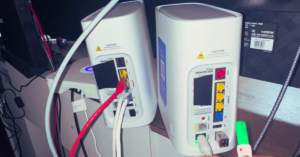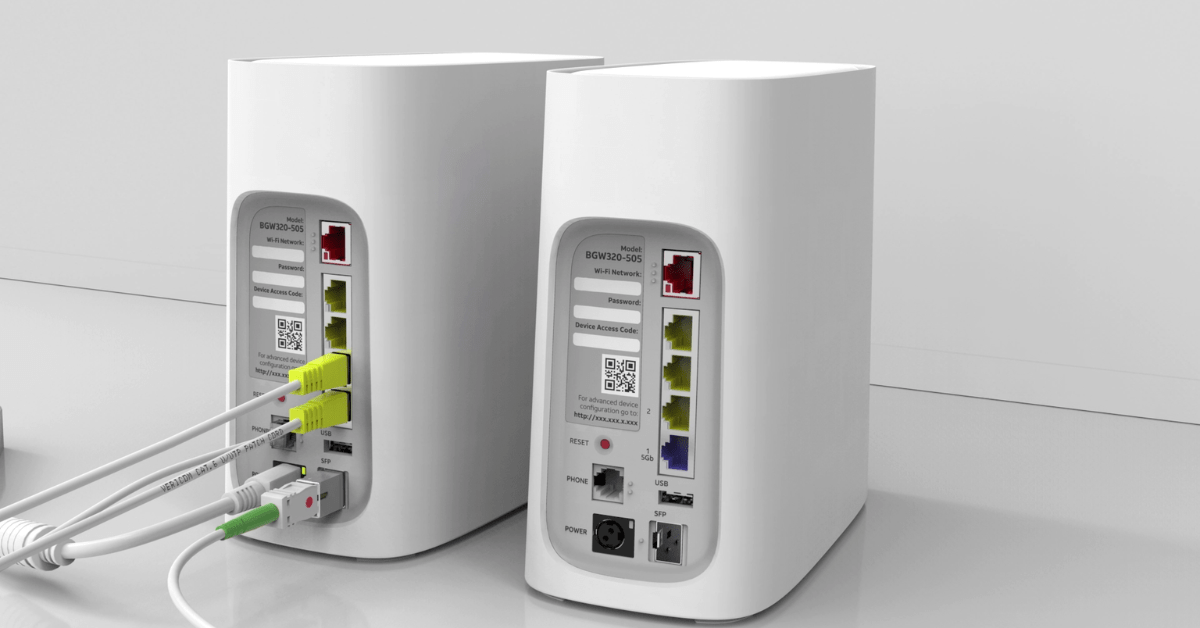Introduction
Today We are Talk About Optimize AT&T Fiber’s BGW320 for Bridge Mode In the modern world, when internet access is of the utmost importance, the BGW320 gateway offered by AT&T Fiber stands out as a solution at the forefront of technological advancement. This piece of hardware is not merely a gateway but the foundation upon which high-speed Internet connectivity is built for residential and commercial Internet networks. In this day and age, where connecting to the internet at a high speed is no longer a luxury but rather a necessity, optimizing network settings is essential to satisfy specific expectations. This article goes into the optimization of the BGW320 for bridge mode, a customized configuration that provides advanced users with increased control over their network performance.

Understanding Bridge Mode of AT&T Fiber’s BGW320
Bridge mode is an essential component of advanced network management, as it allows the BGW320 to be transformed into a Fiber-to-Ethernet bridge that facilitates efficient communication. It is important to note that this mode differs from the default gateway mode, which is when the BGW320 is responsible for routing and modem functions. When operating in bridge mode, the BGW320 takes a step back, enabling a personal router to assume control of the traffic on the network. This move can potentially lead to considerable gains in network speed, particularly in settings with a large density of devices or strong internet consumption.
Why Optimize for Bridge Mode?
Custom routers typically offer more advanced control and functionality than regular gateway devices, which results in enhanced network control. These sophisticated capabilities may include comprehensive network monitoring tools, precise parental controls, and increased security settings, among other things. An appealing alternative for consumers who are knowledgeable about technology and wish to have more control over their network is bridge mode.
Better network performance can be achieved by using specialty routers, which are designed to handle high-traffic quantities in a more effective manner. This may result in increased speed, dependability, and decreased latency. This kind of enhancement is beneficial in particularly demanding situations, such as playing video games online, streaming many videos simultaneously, or running large-scale online activities.
Utilizing a personal router equipped with bridge mode enables the installation of customized firmware, such as DD-WRT or Tomato, one of the advanced features and customization options. It is not possible to get this level of flexibility and control with gateway devices that are considered conventional. It allows users to modify their network settings to tailor them to their interests and requirements.
Preparing for Bridge Mode
Evaluating your existing network configuration and establishing your requirements are both essential steps to take before beginning the process of bridge mode optimization.
Determine the total number of devices that are connected to your network.
Streaming, gaming, general surfing, and working remotely are the most common activities people use when using the internet.
Consider specific requirements, such as compatibility for virtual private networks (VPNs), integrations with smart homes, or voice-over-internet protocol (VoIP) services.
Additionally, it is vital to select the appropriate router. It is essential to not only support your internet connection’s speed but also provide the functionality required for your use case. Collect all of the necessary tools and information, such as the network cables, the MAC address of your router, and the login credentials for the BGW320.
Detailed Steps to Optimize AT&T Fiber’s BGW320 for Bridge Mode
Step one of the initial setup involves gaining access to the web interface of the BGW320 using its network. To accomplish this, you will need to visit a web browser, input the gateway’s IP address (which is often 192.168.1.254), and become familiar with its interface and its fundamental settings.
To configure IP Passthrough, navigate to the BGW320 menu and look for the location of the IP Passthrough settings. ‘DHCPS-fixed’ mode should be selected, and the MAC address of your router should be entered. The BGW320 is put in control of routing responsibilities due to this configuration, which instructs it to provide the public IP address directly to your router.
Wi-Fi Configuration
If using a second Wi-Fi router, consider turning off the BGW320’s Wi-Fi to prevent signal interference and conflicts. Your preferences and requirements should configure the Wi-Fi connections on your router. This includes configuring network names (SSIDs), encryption techniques, and passwords if required.
After saving the settings, you will need to restart both the BGW320 and your personal router to complete the testing process. Test the network thoroughly to ensure it is stable and can increase performance. It is essential to check that all devices can connect and determine whether the network is operating as planned.
Advanced Configuration
Consider these advanced configuration options for people who are looking for a network experience that is even more Personalized to their specific needs.
The Protection of Your Network
To protect yourself from potential dangers on the internet, you should configure your router with security protocols, firewalls, and intrusion detection systems.
Configuration of Custom DNS
To improve browsing speed, privacy, and security, it is recommended to implement custom DNS servers.
Networking for Guests and the Distribution of Bandwidth: Establish a guest network to accommodate visitors and distribute bandwidth among various devices or applications to ensure adequate network utilization.
Troubleshooting Common Issues
You may have connectivity or performance issues after configuring your network to operate in bridge mode. The following is a list of common steps for troubleshooting:
Ensure that the MAC address is accurate to guarantee a smooth IP passthrough.
To remedy performance difficulties, such as signal strength and coverage, you can adjust the router’s settings or the router’s physical positioning.
Please ensure that all of your network’s devices are compatible with the new setup, and then change their settings to reflect the new configuration.
Comparing Different Networking Configurations
To make an educated decision, it is vital to have a solid understanding of the distinction between bridge mode and classic gateway mode
Customers who require advanced network control and customization can benefit from bridge mode since it provides greater flexibility in managing network traffic and optimizing performance. Bridge mode is suitable for customers who need these specific features.
In gateway mode, the BGW320 performs routing and modem tasks without needing extra hardware or configuration. This mode is more suitable for users who seek an all-in-one solution. Gateway mode is also known as gateway mode.
Your decision amongst these modes must be based on your network requirements and technological competence.
Maintaining Your Network
Performing routine maintenance on your Optimize AT&T Fiber’s BGW320 after you have Optimized it for bridge mode is essential to ensuring that your network remains in good health:
It is essential to update its firmware frequently to guarantee that your router is equipped with the most recent security fixes and performance advancements.
It is essential to watch for any unexpected actions on your network, as these could be signs of security breaches or other problems.
Using best practices to maintain a safe and efficient network is essential. These best practices include updating passwords periodically, keeping track of connected devices, and limiting bandwidth usage.
Conclusion
The Optimize AT&T Fiber’s BGW320 for bridge mode is a big step toward achieving a networking experience that is not only more controllable and customizable but also more efficient. Even though it is a detailed process, the configuration procedure provides significant advantages for establishing a customized network. Whether you are a tech enthusiast interested in exploring advanced networking or simply looking to increase your network’s performance, bridge mode can open up new options for your network. This thorough guide enables a wide variety of users, ranging from novices to advanced network administrators, to optimize their BGW320 for bridge mode. This will be accomplished by expanding on each part and providing more specific explanations and recommendations.

